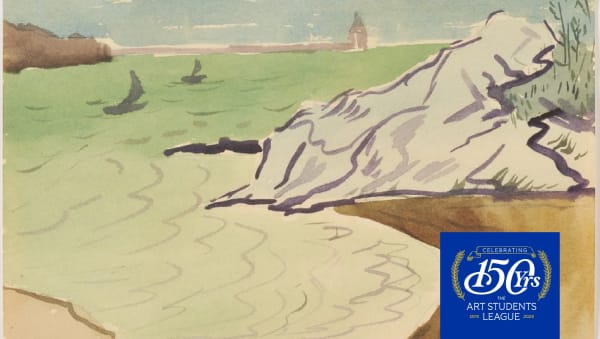George Grosz
I had grown up in a humanist atmosphere, and war to me was never anything but horror, mutilation and senseless destruction, and I knew that many great and wise people felt the same way about it.
– George Grosz
George Grosz was a German-American artist whose satirical drawings and paintings angered the Nazis, who labeled his works ‘degenerate’.
Grosz was born in Berlin in 1893, the youngest of three children. His father died when he was seven. His mother and sisters supported the family by sewing. Grosz was interested in drawing as a child and his earliest sketchbook date back to 1905, featuring soldiers and characters from American novels and magazines.
At age fifteen, Grosz was expelled from school for striking a teacher who was meting out a punishment. His drawing instructor helped him transfer to the to the Dresden Academy of Art. After graduation he moved back to Berlin to attend the School of Arts and Crafts and, in 1913, he spent several moths in Paris at the Académie Colarossi.
Grosz joined the army in 1914, at the start of World War l, but was discharged after six months because of sinusitis. He was recalled to active duty in 1917 and permanently discharged after a stay in a psychiatric facility. After his discharge, Grosz began to draw some of the violent scenes that he had witnessed during his short stint in the army.
In 1919, Grosz began to sell his paintings, which focused on anti-war sentiment and were critical of German society. He was arrested, put on trial and fined by the German government for what the government said was blasphemy, pornography and "grossly insulting the German army.”
In 1932, Grosz moved with his wife, Eva, and their two young sons to New York, where he took a job teaching at the Art Students League. They traveled back to Berlin for a visit, where Grosz was disturbed by the growing influence of the Nazi party. He moved his family back to New York, where he became an American citizen and taught at the Art Students League until 1955.
In 1937, Grosz’s work was included in the Degenerate Art Exhibition, put on by the Nazis, to vilify Jewish artists and other artists who opposed the Hitler regime. Other artists included in the exhibit were Paul Klee, Otto Dix, Marc Chagall, Pablo Picasso and Piet Mondrian. Grosz was stripped of his German citizenship.
In 1959, Grosz sold his home in upstate New York and returned to Berlin. He died a few months after the move, at age 65.
The Museum of Modern Art exhibited a retrospective of Grosz’s work in 1941. His works are part of the permanent collection of The Met, MoMA, The Tate and other major venues.
References:
Alastair Smart. Ten Things to Know About George Grosz. Christie’s. January 9, 2020.
Mary M. Lane. When This German Artist Tried to Use His Work to Warn About Hitler, the World Ignored Him. It's Time to Listen. TIME Magazine. September 10, 2019.
Lucy Burns. Degenerate art: Why Hitler hated modernism. BBC News. November 6, 2013.
Send me more information on George Grosz
-

The Art Students League Celebrates 150th Anniversary
A Special Tribute to Robert Rauschenberg at the Art Students League Gala September 18, 2025The Art Students League is celebrating its 150th anniversary this year. Since 1875 great artists have walked through the doors of 215 West 57th Street...Read more -

The Art Students League Celebrates 150 Years
Showcased works by Milton Avery, Adolph Gottlieb and other Art Students League Alumni June 20, 2025The Art Students League of New York is celebrating its 150th anniversary with an exhibition of works by many of its most talented artists. The...Read more -

Jonas Wood Curator. George Grosz's Disappointed Heirs
David Hockney Retrospective in Paris April 10, 2025In 2023, Jonas Wood (b.1977) had a show of drawings that he had made from 2000 to 2023 in a New York gallery. Wood’s drawings...Read more -

Thomas Hart Benton and Loie Hollowell at the Hirshhorn
November 14, 2024I have a sort of inner conviction that for all the possible limitations of my mind and the disturbing effects of my processes, for all...Read more -

The Work of Julian Opie and George Grosz at Surovek Gallery
September 19, 2024Humans running at full pelt is an affecting sight. It reminds me of homo erectus chasing down an antelope. – Julian Opie The minimalist works...Read more







